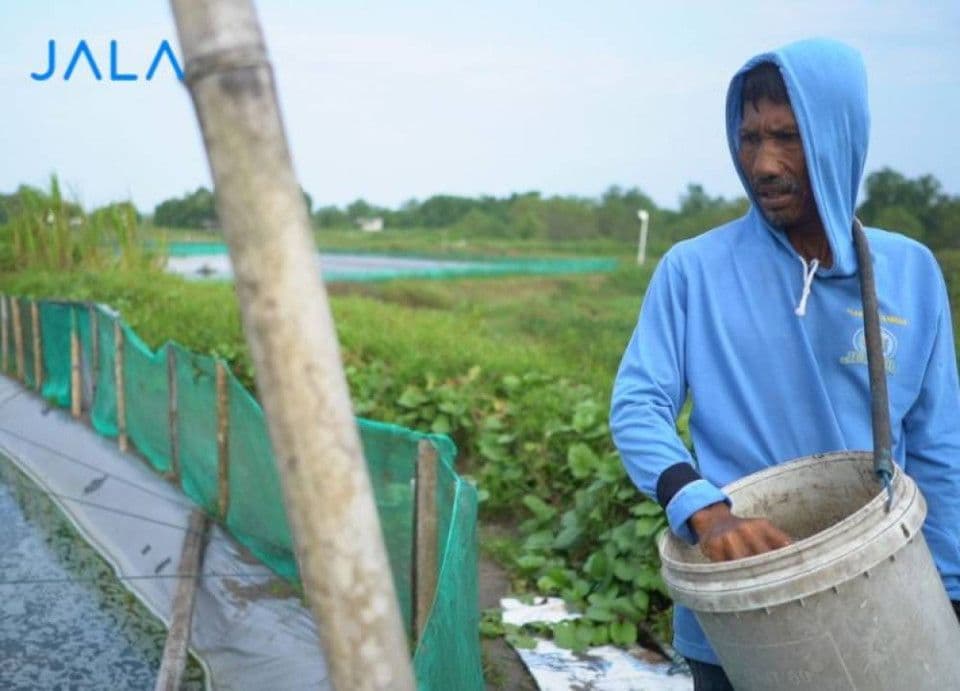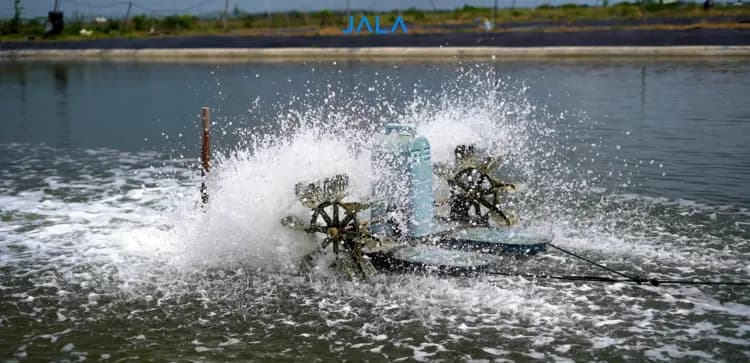
Recently, the use of antibiotics in the aquaculture industry, including shrimp cultivation, has lost its effectiveness. This loss is due to the occurrence of resistant bacteria. In the long term, continued antibiotics application can cause serious implications for human and animal health1. Due to this issue, the use of bacteriophages (or viruses that attack bacteria) is a promising alternative to treat diseases in the aquaculture industry.
Bacteriophages are viruses (phages) that can infect their hosts, which are bacteria of specific strains or species2. Phages can be found in living organisms, in the soil, waste, and water bodies. They are 1030 and 1031 more ubiquitous than bacteria3. The use of bacteriophages is also shown to decrease the population of Vibrio paraheomolitycus in 72 hours from 106 to 101 CFU/mL4.
</span>
Image 1. The application of bacteriophages in cultivation and its advantages5
</span>
Image 2. Lytic and lysogenic cycle of bacteriophages
Image 2 shows the life cycle of phages. Phages will penetrate their bacterial host cells and the new viruses they produce will destroy bacterial cells6. This makes bacteriophages a potential candidate for antibiotics replacement.
Although the use of bacteriophages has numerous advantages, treating shrimp diseases with bacteriophages also raises several concerns. Like antibiotic usage, it may cause the occurrence of phages that are resistant towards bacteria. In 2003, Munro et al. reported the death of tiger shrimps upon the administration of bacteriophage-induced Vibrio harveyi7. Such issues might occur due to a mutation of bacterial proteins, or the lack of adsorption between the phage and the bacteria, hindering the phage from causing an infection. Some bacterial strains are known to have defense mechanisms to prevent adsorption, for example through blocking receptors8.
Testing is thus required to assess whether bacteriophages carry a virulent gene and are safe to be applied in shrimp cultivations. To eliminate further risks and prevent disease spread, disinfection is needed after bacteriophage application in shrimp farms.
References
Letchumanan V, Chan K-G, dan Lee L-H. (2015). An insight of traditional plasmid curing in Vibrio species. Front. Microbiol. 6:735. doi: 10.3389/fmicb.2015.00735
Hagens S, dan Loessner MJ. (2010). Bacteriophage for biocontrol of foodborne pathogens: calculations and considerations. Curr. Pharm. Biotechnol. 11:58–68. doi: 10.2174/138920110790725429
Abedon ST, Kuhl JS, Blasdel BG, Kutter EM. (2011). Phage treatment of human infections. Bacteriophage 1: 66–85. doi: 10.4161/bact.1.2.15845
Jun JW, Shin TH, Kim JH, Shin SP, Han JE, Heo GJ, et al. (2014). Bacteriophage therapy of a Vibrio parahaemolyticus infection caused by a multiple antibiotic resistant O3:K6 pandemic clinical strain.J. Infect.Dis. 210:72–78. doi: 10.1093/infdis/jiu059
Letchumanan V, Chan K-G, dan Lee L-H. (2016). Insights into Bacteriophage Application in Controlling Vibrio Species. Front. Microbiol. 7:1114. doi : 10.3389/fmicb.2016.01114
Subharthi Pal. (2015). Phage Therapy an alternate disease control in Aquaculture: A review on recent advancements. IOSR Journal of Agriculture and Veterinary Science 8 (9):68-81
Munro J, Oakey J, Bromage E, Owens L. (2003). Experimental bacteriophage-mediated virulence in strains of Vibrio harveyi. Dis Aquat.Org. 54:187–194. doi: 10.3354/dao054187
Labrie SJ, Samson JE, Moineau S. (2010). Bacteriophage resistance mechanisms. 8(5), 317–327. doi:10.1038/nrmicro2315





